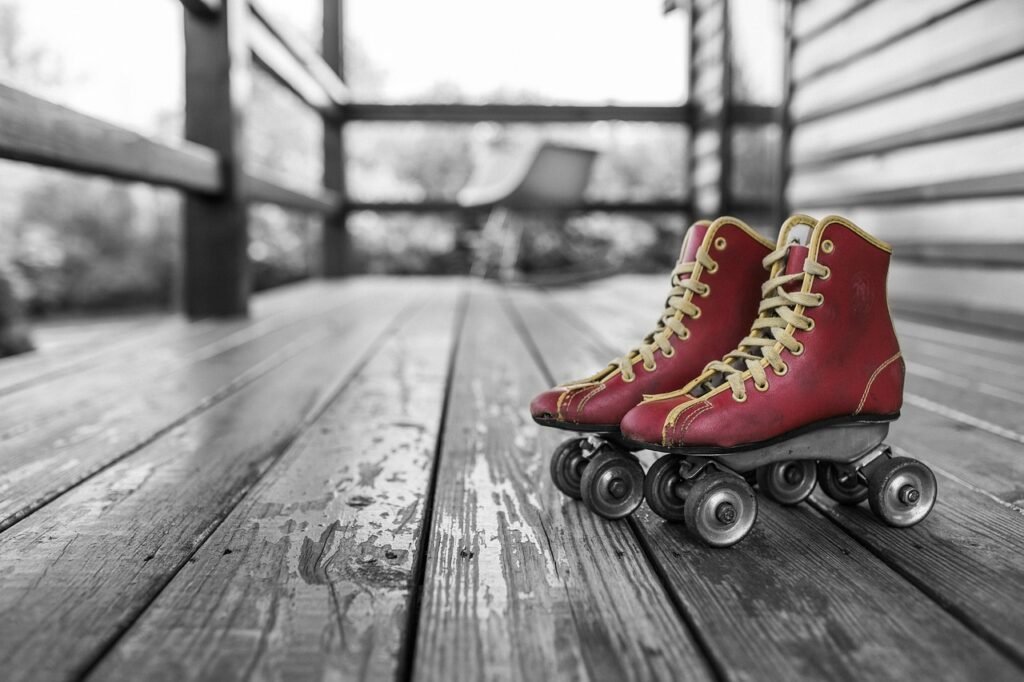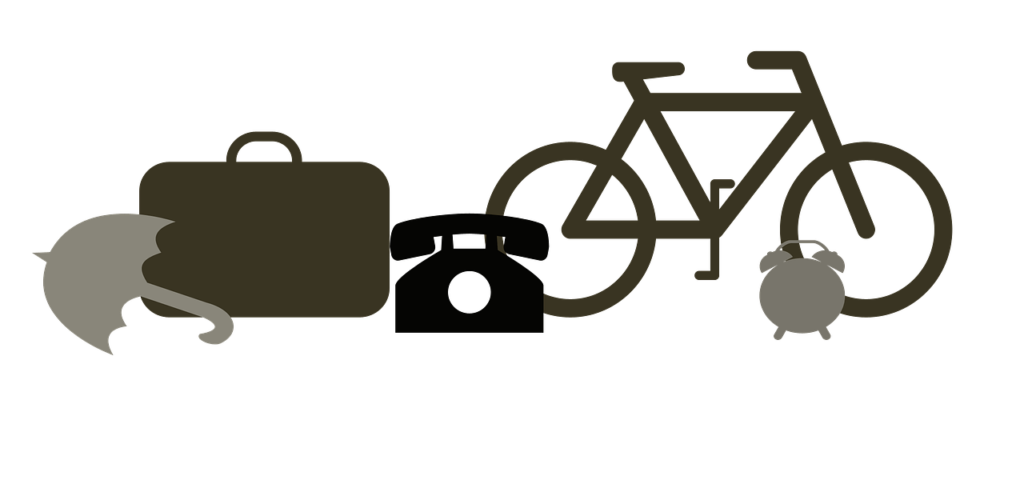
Want to get fit but don’t want to break the bank? Look no further! This article will guide you on how to choose quality used exercise equipment, providing you with valuable tips and advice for making the right purchase. Don’t let budget constraints hinder your fitness goals – learn how to find the perfect second-hand gym gear that meets your needs and stands the test of time. Excited to start your fitness journey without burning a hole in your pocket? Let’s dive in and explore the world of used exercise equipment!

This image is property of pixabay.com.
Research different types of exercise equipment
When it comes to choosing exercise equipment, there are various options available in the market. Before making a decision, it is essential to research different types of exercise equipment that align with your fitness goals. Whether you are looking for cardio machines like treadmills or stationary bikes, or strength training equipment like dumbbells or weight machines, understanding the benefits of each type will help you make an informed choice.
Consider your fitness goals
Your fitness goals play a crucial role in determining the type of exercise equipment you should invest in. If your primary goal is to improve cardiovascular fitness, then cardio machines such as treadmills, ellipticals, or rowing machines would be suitable choices. On the other hand, if you are more focused on building strength and muscle, weight machines or free weights like dumbbells or barbells might be more appropriate. Understanding your goals will allow you to select equipment that best suits your needs.
Understand the benefits of different equipment
Each type of exercise equipment offers its unique benefits. For example, treadmills provide an effective way to burn calories and improve cardiovascular endurance, and stationary bikes offer a low-impact workout that is gentle on the joints. Weight machines, on the other hand, provide targeted strength training for specific muscle groups. By familiarizing yourself with the benefits of different equipment, you can choose the ones that align with your fitness goals and preferences.
Read reviews and ratings of different brands and models
Before purchasing exercise equipment, it is essential to do your due diligence by reading reviews and ratings of different brands and models. Online platforms and fitness forums are excellent sources of information where you can find feedback from other users. By considering the experiences and opinions of others, you can gain valuable insights into the performance, durability, and overall quality of the equipment you are considering.
Evaluate the condition of the equipment
Once you have narrowed down your options, it’s time to evaluate the condition of the used exercise equipment you are interested in. Taking the time to inspect and test the equipment will help ensure that you are making a wise investment.
Inspect for any visible damages or wear and tear
Inspect the equipment closely for any visible damages or signs of wear and tear. Look for any cracks, dents, or frayed cables that may affect the functionality and safety of the equipment. Carefully examine the upholstery, padding, and grips for any tears or excessive wear. It’s essential to choose equipment that is in good condition to avoid any potential hazards or performance issues.
Test the equipment to ensure it functions properly
Testing the equipment is another crucial step in evaluating its condition. Make sure to try out all the features and settings to ensure they function properly. For cardio machines, test the speed adjustments, incline settings, and any built-in programs. If you are considering strength training equipment, check the range of motion and resistance mechanisms to ensure smooth operation. By thoroughly testing the equipment, you can verify that it is in good working order.
Check if all parts and accessories are included
Before finalizing your decision, ensure that all necessary parts and accessories are included with the equipment. Missing components or attachments can significantly affect the usability and effectiveness of the equipment. Check if all the necessary bolts, nuts, cables, or any other accessories are present. It is also advisable to ask the seller about the availability of user manuals or instructional materials to help you properly set up and use the equipment.

This image is property of pixabay.com.
Consider the age and usage history of the equipment
Understanding the age and usage history of the used exercise equipment is crucial to determine its reliability and longevity. Asking the right questions will give you valuable insights into the equipment’s past and potential future performance.
Inquire about the age of the equipment
Ask the seller about the age of the equipment. It is important to know how long the equipment has been used to assess its remaining lifespan and potential issues. Generally, newer equipment will have a longer life expectancy and may require fewer repairs or maintenance.
Ask about the frequency and intensity of previous usage
Understanding the frequency and intensity of previous usage will give you an idea of how extensively the equipment has been used. If the equipment has been used frequently and at high intensity, it may have experienced more wear and tear. However, if it has been used sparingly or only for short periods, it is more likely to be in better condition.
Consider the warranty or service history of the equipment
Inquire about any remaining warranty on the equipment or if the equipment has undergone any recent servicing. A warranty provides you with added protection and ensures that any potential issues can be addressed by the manufacturer or seller. Similarly, if the equipment has a service history with regular maintenance, it indicates that it has been well taken care of and may be a more reliable option to consider.
Research the seller or source of the equipment
When purchasing used exercise equipment, it is essential to research the seller or source from whom you are buying. This will help ensure that you are dealing with reputable individuals or businesses, increasing your chances of a positive buying experience.
Buy from reputable sellers or retailers
It is always recommended to buy from reputable sellers or retailers. Look for well-established businesses or individuals who have a track record of selling quality used exercise equipment. Check for online reviews or ask for recommendations from friends or fitness professionals. Buying from a reputable seller will give you peace of mind knowing that you are purchasing a reliable product.
Ask for references or testimonials from previous customers
If you are buying from an individual seller, asking for references or testimonials from previous customers can provide you with insights into their credibility and the quality of the equipment they sell. Reach out to these references and inquire about their experiences with the seller. If the seller hesitates to provide references, it may be a red flag, and you should proceed with caution.
Check online marketplaces and classified ads
Online marketplaces and classified ads can be a convenient way to find used exercise equipment. However, exercise caution and thoroughly research the sellers before making a purchase. Look for sellers with positive reviews and ratings, and pay attention to any buyer feedback or comments. Additionally, be aware of potential scams or counterfeit products and follow best practices to ensure a safe and smooth transaction.

This image is property of pixabay.com.
Set a budget
Before diving into the buying process, it is important to set a budget for your used exercise equipment. By determining how much you are willing to spend, you can narrow down your options and make a more focused decision.
Determine how much you are willing to spend
Evaluate your financial situation and determine how much you are willing to spend on used exercise equipment. Consider your long-term fitness goals and how frequently you intend to use the equipment. A higher budget might allow you to invest in more advanced or durable equipment, while a lower budget may require you to prioritize certain features over others.
Compare prices from different sellers or sources
Once you have set your budget, it is advisable to compare prices from different sellers or sources. This will help you get a sense of the range of prices for similar equipment and ensure that you are not overpaying. Keep in mind that prices for used exercise equipment may vary depending on factors such as age, condition, brand, and features.
Consider the cost of potential repairs or maintenance
While buying used exercise equipment can be more cost-effective, it is important to consider the potential cost of repairs or maintenance. Older equipment or equipment that has been heavily used may require repairs or replacement parts sooner. Take this into account when budgeting and factor in any additional expenses that may arise.
Consider the available space in your home
Another important factor to consider is the available space in your home. Determine where you intend to place the exercise equipment and ensure that it will fit comfortably in your designated area.
Measure the dimensions of the equipment
Measure the dimensions of the exercise equipment to ensure that it will fit in your home. Consider the length, width, and height of the equipment, especially if it is a larger piece like a treadmill or a home gym setup. Ensure that you have sufficient space to accommodate the equipment without it feeling cramped or obstructing other areas.
Ensure it can fit comfortably in your designated area
Having adequate space around the exercise equipment is crucial for a safe and comfortable workout environment. Make sure that there is enough clearance on all sides of the equipment to allow for smooth movement and proper operation. Consider factors such as the opening and closing of doors, access to electrical outlets, and ventilation to create an optimal workout space.
Consider the weight and portability of the equipment
If you plan on moving the equipment around or storing it when not in use, consider its weight and portability. Heavier equipment may require assistance when moving, while lighter and more compact options might be easier to handle. Additionally, check if the equipment has any built-in wheels or folding mechanisms that enhance its portability and storage options.
Check for safety features
When it comes to exercise equipment, safety should always be a top priority. Ensuring that the equipment has adequate safety features will help minimize the risk of accidents or injuries during your workouts.
Inspect for any safety labels or certifications
Look for safety labels or certifications on the equipment to ensure that it meets the necessary safety standards. These labels indicate that the equipment has undergone rigorous testing and complies with industry regulations. Safety certifications provide reassurance that the equipment is designed and built with user safety in mind.
Ensure the equipment has emergency stop buttons or safety locks
Emergency stop buttons or safety locks are important safety features to look for in exercise equipment. These features allow you to quickly stop the equipment’s motion in case of an emergency or if you need to halt the workout immediately. Having easy access to these controls can prevent accidents and provide peace of mind during your workouts.
Test the stability and sturdiness of the equipment
Stability and sturdiness are crucial aspects to consider when evaluating exercise equipment. Test the equipment for any wobbling or instability during use. Ensure that it is solidly constructed and can withstand your weight and movement without any risk of tipping or collapsing. A stable and sturdy piece of equipment will provide a safe and reliable workout experience.
Ask about the warranty or return policy
Before finalizing your purchase, it is important to inquire about the warranty or return policy of the used exercise equipment. Having proper warranty coverage or the option to return or exchange the equipment can offer peace of mind and protect you from any potential issues.
Inquire about any remaining warranty on the equipment
Ask the seller if any warranty is remaining on the equipment. Warranties can provide assurance that the manufacturer or seller will address any manufacturing defects or malfunctions within the specified period. Knowing the remaining warranty coverage can help you gauge the level of support and service you can expect.
Ask about the seller’s return or exchange policy
Inquire about the seller’s return or exchange policy in case you encounter any issues with the equipment after the purchase. Understand the timeframe within which you can return or exchange the equipment and any associated terms or conditions. Having a flexible return or exchange policy will give you the confidence to make a purchase without the fear of being stuck with a faulty or unsuitable piece of equipment.
Consider purchasing additional warranty coverage
If the used exercise equipment does not have any remaining warranty coverage, you may want to consider purchasing additional warranty coverage. Many third-party companies offer extended warranty plans for used equipment, providing you with added protection and peace of mind. Evaluate the cost of the warranty coverage and the potential benefits it offers before making a decision.
Test the equipment before purchasing
Before finalizing your purchase, it is highly recommended to test the equipment to see if it suits your needs and preferences. Taking the equipment for a trial run will help you determine its performance and suitability for your fitness routine.
Test the equipment to see if it suits your needs and preferences
Take the equipment for a spin and see if it meets your specific needs and preferences. Pay attention to how it feels and performs during your workout. Is the motion smooth? Does it provide adequate resistance or intensity? Testing the equipment will give you firsthand experience and enable you to make an informed decision.
Try out different features and settings
Explore and experiment with the various features and settings of the equipment. Adjust the incline or resistance levels, try different programs or workout modes, and test any interactive or multimedia features. Understanding and experiencing the equipment’s range of capabilities will help you decide if it aligns with your desired workout routine and enhances your fitness experience.
Pay attention to any discomfort or unusual noises
During your testing phase, pay attention to any discomfort or unusual noises that may indicate problems with the equipment. If you experience discomfort or strain during your workout, it may be a sign that the equipment is not ergonomically suited to your body or exercise preferences. Unusual noises or vibrations could indicate underlying mechanical issues that may require future repairs.
Consider additional factors
In addition to the main considerations mentioned above, there are other factors worth considering when purchasing used exercise equipment. These factors may contribute to your overall satisfaction and convenience.
Transportation and delivery options
If the equipment is not located at your home or if you need assistance with transporting it, inquire about transportation and delivery options. Some sellers or retailers may provide delivery services for an additional fee. Understanding the logistics and costs associated with transportation can save you time and effort in moving the equipment to your desired location.
Availability of user manuals or instructional materials
Having access to user manuals or instructional materials is important for setting up and using the equipment correctly. Before making a purchase, check if the necessary user manuals or instruction guides are available. Clear instructions on assembly, operation, and maintenance will ensure that you can make the most of the equipment safely and effectively.
Additional accessories or attachments included
Consider whether the equipment comes with any additional accessories or attachments that can enhance your workout experience. This could include items like fitness trackers, heart rate monitors, or specialized handle attachments. Assessing the value and usefulness of these additional items can help you make a more comprehensive evaluation of the overall package being offered.
Buying used exercise equipment can be a cost-effective way to achieve your fitness goals. By thoroughly researching different types of equipment, evaluating the condition and usage history, researching sellers or sources, setting a budget, considering available space, checking for safety features, inquiring about warranties or return policies, testing the equipment, and considering additional factors, you can make an informed decision and find quality used exercise equipment that suits your needs and preferences. Remember to prioritize your safety, comfort, and long-term fitness goals when making your final choice. Happy shopping and enjoy your new fitness journey!


